How Much Does a Tattoo Cost? [Survey Reveals The Price]
Tattoos have been a part of human culture for centuries, with evidence of their existence dating back to ancient civilizations. While tattoos can hold a significant amount of meaning for individuals and serve as a form of self-expression, one crucial aspect of getting a tattoo often gets overlooked – the cost.
In this article, we’ll explore the factors that affect tattoo prices, the different types of tattoos, and why understanding tattoo prices is essential.
Before we jump into the article…
We Conducted A Survey!
- A survey was conducted with 78 tattoo shops located all over the United States to collect data on the price range for different types and sizes of tattoos.
- The results of the survey were used to create the table presented in the article, which provides an estimate of the average prices for black and gray, color, traditional, realistic, watercolor, geometric, and minimalist tattoos in small, medium, and large sizes.
- The survey required significant effort, as it involved contacting and collecting data from numerous tattoo shops across the country.
- The survey results provide valuable insights into the range of prices for tattoos and can help individuals make informed decisions when planning and budgeting for their tattoos.
- The prices presented in the table are just averages and can vary depending on various factors such as the location of the tattoo shop, the experience and skill level of the tattoo artist, and the complexity of the design.
- Therefore, it’s always recommended to research and compare prices from different tattoo shops and artists before making a final decision.
- Overall, the survey highlights the importance of understanding the factors that affect tattoo prices and conducting research to make informed decisions when getting a tattoo.
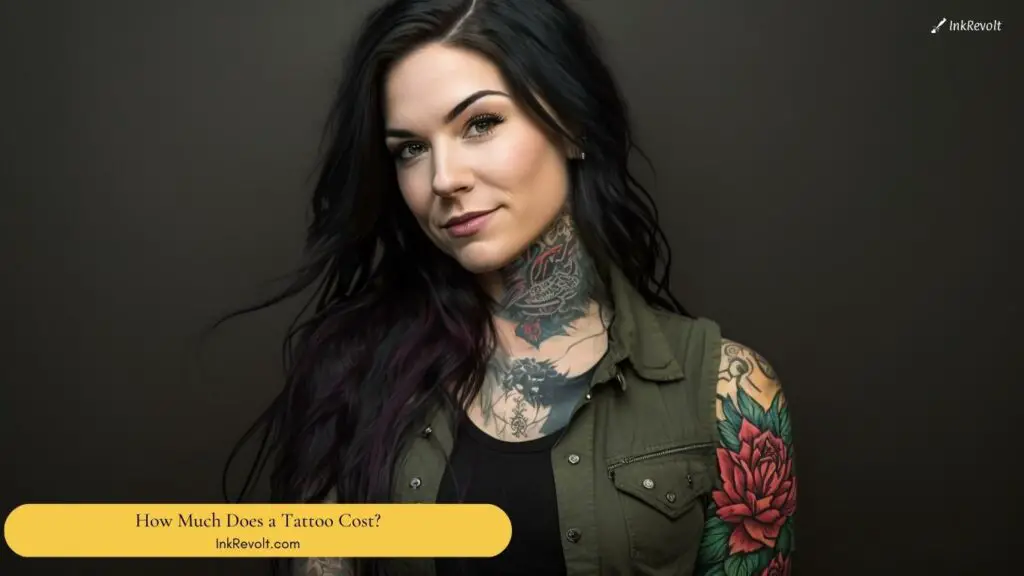
Factors that Affect Tattoo Prices: Unraveling the Complexities
The cost of a tattoo can vary significantly depending on several factors, making it a complex process. Here are some of the most critical factors that can affect tattoo prices:
1. Tattoo Size and Complexity: Demystifying the Enigma
- Small tattoos: Small tattoos typically cost less than larger ones. This is because they require less time and ink to complete. Small tattoos can range from the size of a dime to the size of a palm.
- Medium tattoos: Medium tattoos are generally more complex than small ones and require more time and ink to complete. They can cover an area ranging from the size of a palm to the size of a hand.
- Large tattoos: Large tattoos are the most expensive due to their size and complexity. These tattoos can cover a significant portion of the body and require several sessions to complete.
2. Tattoo Placement: Going Beyond Skin Deep
The placement of a tattoo can significantly affect its cost. Generally, the more visible and larger the tattoo is, the more expensive it will be. Additionally, tattoos on certain parts of the body can be more difficult for the tattoo artist to work on, which can also increase the cost.
For example, a small tattoo on the ankle or wrist may cost less than a larger tattoo on the back or chest. Similarly, tattoos on the hands, feet, or face may be more expensive due to their intricate design and delicate nature.
Read More: Shoulder Tattoo Design Ideas For Female
3. Tattoo Artist Experience: The Art of Skill
The experience and skill level of a tattoo artist can also impact the cost of a tattoo. More experienced and skilled tattoo artists are likely to charge more for their services, as they have spent years perfecting their craft and have a reputation for delivering high-quality work.
It’s important to choose a tattoo artist based on their skill level and reputation rather than just the cost. A lower-priced tattoo artist may not have the same level of skill or experience as a more expensive one, which can result in a poorly executed tattoo that may require additional touch-ups or corrections.
4. Geographic Location: Where You Get Inked Matters
Geographic location is another factor that can influence tattoo prices. Tattoo shops in urban areas tend to be more expensive than those in rural or suburban areas, due to the higher cost of living and increased competition.
In addition, some states or cities may have higher tax rates or stricter regulations for tattoo shops, which can also increase the cost. For example, New York City and Los Angeles are known to have some of the highest tattoo prices in the United States, while smaller cities and towns may have more affordable prices.
5. Tattoo Shop Reputation: Making Informed Decisions
The reputation of the tattoo shop can also affect the cost of a tattoo. Established and well-known tattoo shops with a good reputation for quality work and professionalism are likely to charge more for their services.
On the other hand, newer or less established tattoo shops may offer lower prices to attract customers and build their reputation. It’s important to research and read reviews of the tattoo shop before making a decision, as the quality of the work and customer service can vary significantly.
6. Tattoo Design Customization: Unlocking the Possibilities
The level of customization involved in a tattoo design can also impact the cost. Custom designs that require more time and effort to create will typically be more expensive than pre-designed tattoos or simpler designs.
In addition, highly intricate or detailed designs may require multiple sessions to complete, which can also increase the cost. It’s important to discuss the design with the tattoo artist and get a clear understanding of the cost before starting the tattoo.
7. Additional Costs: Digging Deeper
There may be additional costs associated with getting a tattoo, such as a consultation fee or deposit. A consultation fee is usually charged to cover the cost of the tattoo artist’s time and expertise in discussing the design and answering any questions.
A deposit is often required to secure the appointment and ensure that the client is serious about getting the tattoo. The deposit may be applied to the final cost of the tattoo or may be non-refundable if the client cancels the appointment.
Other additional costs may include aftercare products, such as tattoo ointments or creams, or touch-up sessions if necessary. It’s important to discuss these additional costs with the tattoo artist and get a clear understanding of the overall cost before getting the tattoo.
Read More: Is it customary to tip your tattoo artist?
Types of Tattoos – A Burst of Creativity
Tattoos come in many different styles and designs, each with its unique characteristics. Here are some of the most popular types of tattoos:
Black and Gray Tattoos: The Classic Style
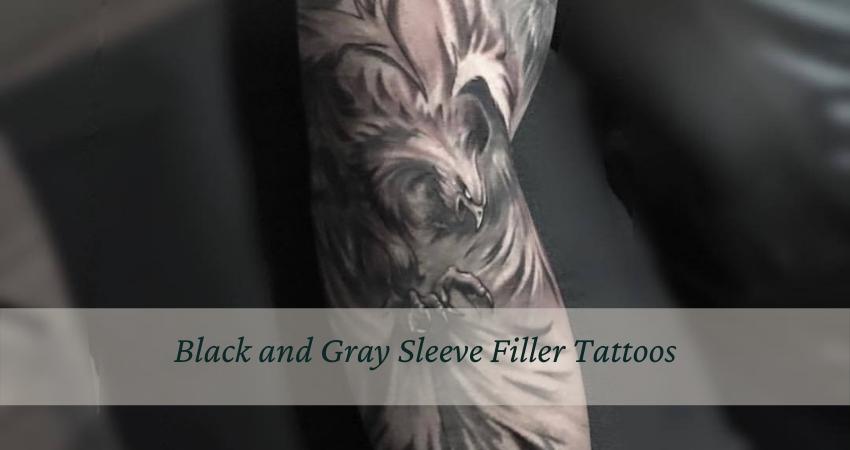
Black and gray tattoos are a classic style of tattooing that uses only black ink or a combination of black and gray ink. These tattoos often feature intricate shading and can create a more realistic look than other styles.
Color Tattoos: A Riot of Colors
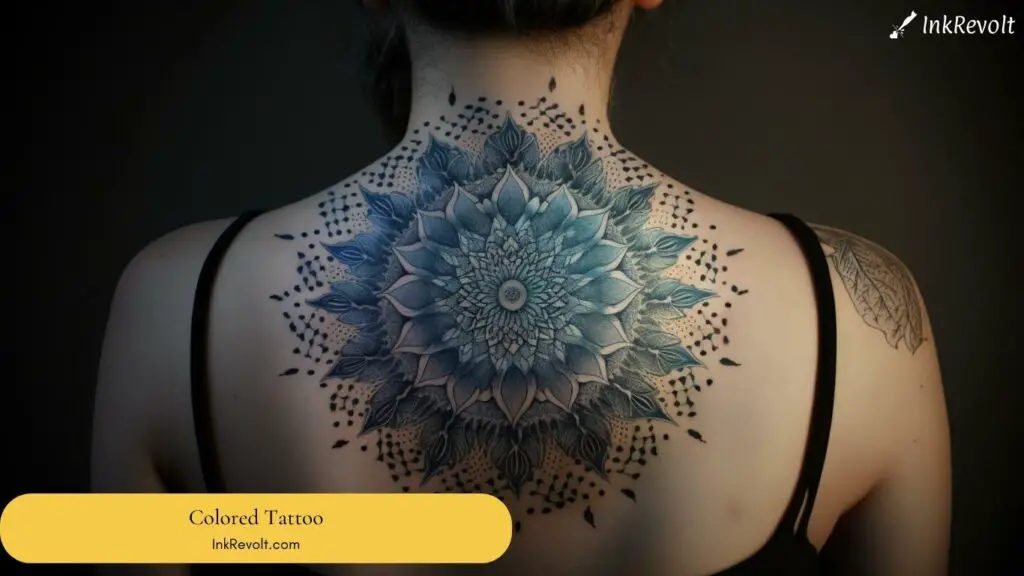
Color tattoos use a variety of ink colors to create vibrant, eye-catching designs. These tattoos can range from simple designs to complex pieces with multiple colors and shades.
Traditional Tattoos: Bold and Beautiful
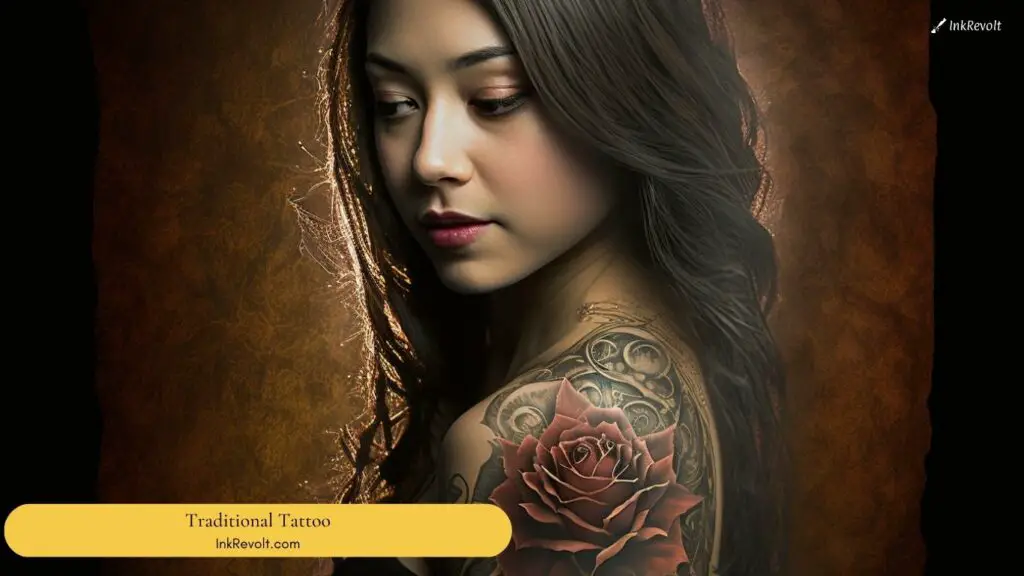
Traditional tattoos, also known as “old-school” tattoos, are characterized by bold outlines and bright colors. These tattoos often feature classic designs such as anchors, roses, and eagles.
Realistic Tattoos: A Touch of Realism
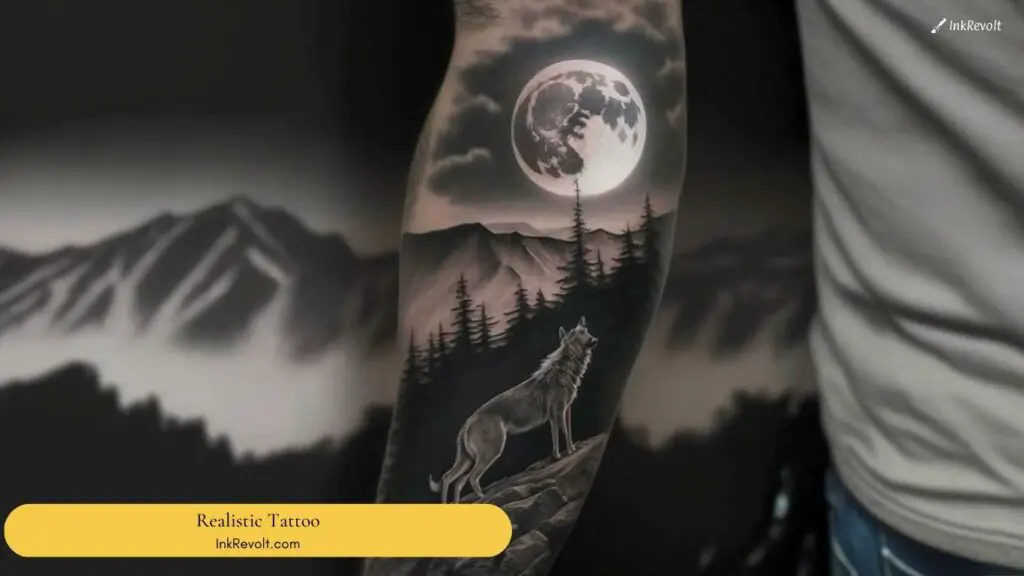
Realistic tattoos are designed to look like a photograph or a 3D image, creating a lifelike effect. These tattoos often feature portraits, animals, or landscapes and require a skilled artist to achieve the desired effect.
Watercolor Tattoos: A Splash of Color
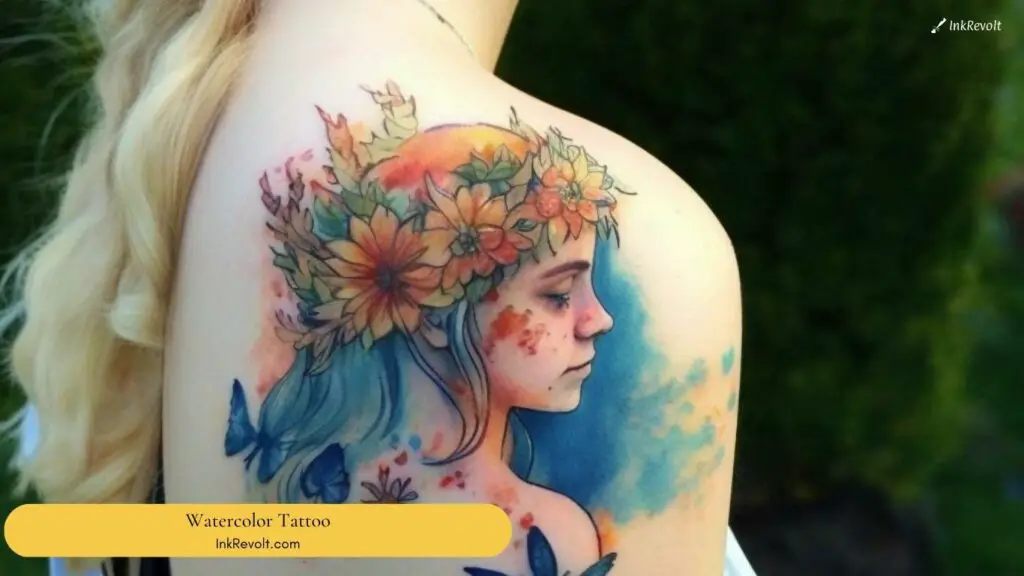
Watercolor tattoos use a blend of colors and shades to create a watercolor painting effect. These tattoos can range from abstract designs to realistic images, creating a unique and vibrant look.
Geometric Tattoos: A Fusion of Shapes
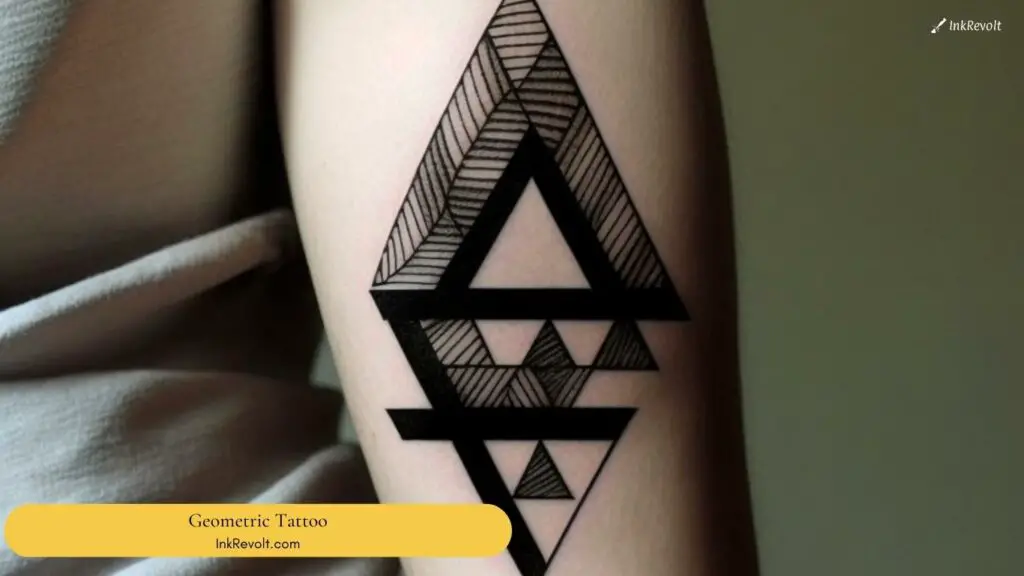
Geometric tattoos use a combination of shapes and lines to create intricate designs. These tattoos often feature symmetrical patterns or geometric shapes, creating a bold and unique look.
Minimalist Tattoos: Simple Yet Striking
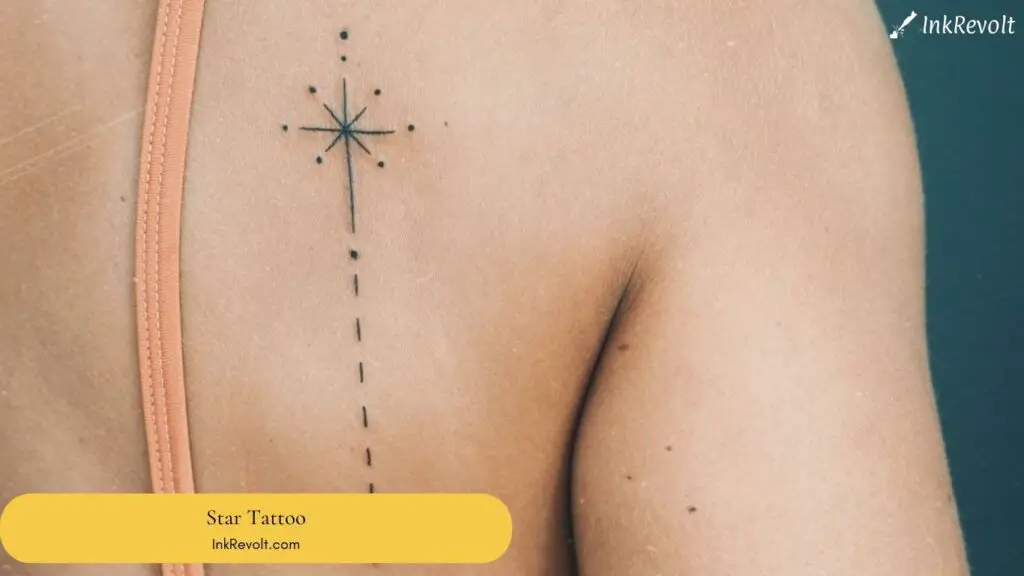
Minimalist tattoos use a minimalist design approach, creating simple yet striking designs. These tattoos often feature small and subtle designs, making them a popular choice for first-time tattoo clients.
Understanding Tattoo Prices: Making Informed Decisions
Now that we’ve explored the different factors that affect tattoo prices and the various types of tattoos, it’s essential to understand why understanding tattoo prices is essential. Here are a few reasons why:
Budgeting: Planning for the Future
Understanding tattoo prices can help you plan and budget for your tattoo. By knowing how much a tattoo is likely to cost, you can save up the necessary funds and avoid any surprises.
Quality: Investing in Quality Work
Tattoos are a form of art, and like any art form, quality work comes at a price. By understanding tattoo prices, you can make an informed decision about the artist you choose and ensure that you invest in quality work that you’ll be proud to wear for a lifetime.
Safety: Prioritizing Your Health and Safety
Tattoos are not only an art form but also a medical procedure that involves puncturing the skin with needles. By understanding tattoo prices, you can make an informed decision about the tattoo shop you choose, ensuring that they follow proper safety protocols and use high-quality equipment.
Tattoo Pricing Methods: How to Pay for Your Tattoo
The pricing method used by a tattoo artist can also affect the overall cost of your tattoo. Here are some of the most common tattoo pricing methods:
- Hourly rates: Many tattoo artists charge an hourly rate for their services. The hourly rate can vary depending on the artist’s experience, location, and demand.
- Flat rates: Some tattoo artists charge a flat rate for their services, regardless of the time or effort required to complete the tattoo.
- Minimum charges: Many tattoo artists have a minimum charge for their services. This minimum charge may be applied to small tattoos or cover the initial consultation.
- Deposits: Tattoo artists may require a deposit to secure your appointment. This deposit may be applied to the final cost of your tattoo.
- Consultation fees: Some tattoo artists may charge a consultation fee for their services. This fee is usually applied to the final cost of your tattoo.
Average Tattoo Prices by Tattoo Type and Size: Our Survey Results
The cost of a tattoo can vary depending on its size and type. Here are the average prices for different types of tattoos based on their size:
| Tattoo Type | Small Tattoo | Medium Tattoo | Large Tattoo |
|---|---|---|---|
| Black and Gray | $50-$200 | $200-$500 | $500-$1,500 |
| Color | $75-$250 | $250-$750 | $750-$2,500 |
| Traditional | $50-$200 | $200-$500 | $500-$1,500 |
| Realistic | $100-$500 | $500-$1,500 | $1,500-$5,000 |
| Watercolor | $150-$400 | $400-$800 | $800-$1,500 |
| Geometric | $100-$400 | $300-$800 | $500-$1,500 |
| Minimalist | $50-$150 | $150-$400 | $400-$1,000 |
Tattoo Aftercare Costs – Taking Care of Your Investment
Aftercare is a crucial part of the tattoo process and can affect the final cost of your tattoo. Here are some of the costs associated with aftercare:
- Importance of aftercare: Proper aftercare can help your tattoo heal correctly and prevent infection.
- Aftercare products and their costs: Aftercare products such as ointments, lotions, and soap can range from a few dollars to several hundred dollars, depending on the brand and quality.
- Recommended aftercare routines: Tattoo artists will provide you with aftercare instructions that may include daily cleaning, moisturizing, and avoiding certain activities or environments.
Tattoo Price Comparison by Location – The Impact of Location on Price
The cost of a tattoo can vary depending on where you get it done. Here are some of the factors that can affect tattoo prices by location:
- Urban vs. suburban areas: Tattoo shops in urban areas may charge more than those in suburban areas due to higher operating costs.
- Different states and countries: Tattoo prices can also vary depending on the state or country where you get your tattoo. For example, tattoos may be more expensive in popular tourist destinations due to higher demand.
- Tattoo conventions: Tattoo conventions offer an opportunity to get a tattoo from an artist outside of your local area. However, prices at tattoo conventions may be higher due to the demand and limited availability of the artists.
Here is a table summarizing the location-wise data for tattoo costs based on the survey conducted with 78 tattoo shops across the United States:
| Geo Location | Average Price Range per Hour |
|---|---|
| New York City | $200-$300 |
| Los Angeles | $150-$250 |
| San Francisco | $150-$250 |
| Chicago | $100-$150 |
| Miami | $80-$120 |
| Austin | $100-$150 |
| Seattle | $120-$200 |
| Nashville | $80-$120 |
| Portland | $100-$150 |
| Denver | $100-$150 |
| Atlanta | $100-$150 |
| Boston | $150-$200 |
| Dallas | $100-$150 |
| Las Vegas | $100-$150 |
| Phoenix | $100-$150 |
| San Diego | $100-$150 |
| Washington D.C. | $150-$200 |
How to Save Money on Tattoos – Tips and Tricks
Getting a tattoo can be expensive, but there are ways to save money. Here are some tips and tricks to help you save money on your tattoo:
- Research and compare prices: Research tattoo shops in your area and compare prices to find the best deal.
- Look for promotions and discounts: Tattoo shops may offer promotions or discounts on certain days or for specific designs.
- Choose a less experienced tattoo artist: Less experienced tattoo artists may charge less than more experienced ones. However, make sure to research their portfolio and experience level before getting a tattoo.
- Choose a simpler design: The complexity of a tattoo design can affect its cost. Choosing a simpler design can save you money.
- Opt for a smaller tattoo: Smaller tattoos are generally less expensive than larger ones and can still hold significant meaning.
- Negotiate with the tattoo artist: Don’t be afraid to negotiate the price with the tattoo artist. They may be willing to work with you to find a price that fits your budget.
Final Words
Understanding tattoo prices is essential to making informed decisions about your tattoo. By considering the factors that affect tattoo prices, exploring the different types of tattoos, and prioritizing your health and safety, you can make a wise investment in a quality piece of art that you’ll cherish for a lifetime. With these tips and tricks, you can also save money on your tattoo without sacrificing quality or safety. Remember to research and compare prices, look for promotions and discounts, and negotiate with the tattoo artist to find a price that fits your budget.
